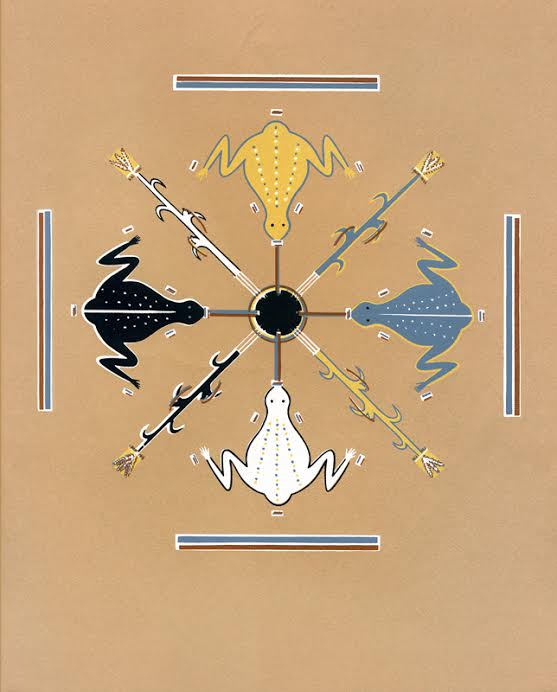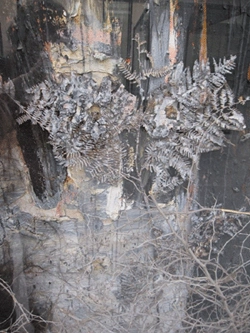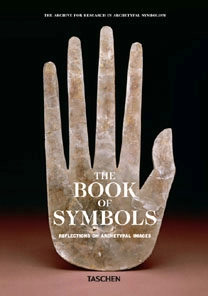ARAS Connections: Image and Archetype - 2011 Issue 1

This edition introduces three new features of ARAS Online and it is the goal of ARAS Connections and ARAS Online to continue such innovations. The fact is that we have a wonderful internet platform that permits all kinds of experimentation and subscribers are invited to email us their ideas for new features.
Stacy Erickson, the curator of ARAS in San Francisco, has spent over a year developing a tutorial for ARAS Online. The tutorial was designed to guide new--and not so new--users of ARAS through the many possabilities for online research that the archive supports. Most of us probably use just a fraction of the search capacities of our site and it is worth taking the time to read the tutorial as a way of deepening our understanding of how to use ARAS Online. The tutorial is designed to be a practical, step-by-step guide to the best use of the site while simultaneously informing the user about the underlying spirit of ARAS and its method of exploring symbolic material through amplification.
The second new feature is a review of a current art exhibit. For some time, we have imagined this as something we would like to include and the opportunity presented itself when Jacqueline West and Nancy Dougherty approached us with the idea of writing a "post-script" to their lovely article on Anselm Kiefer that appeared in the last edition of ARAS Connections. It happened that there was a Kiefer exhibition that so fascinated our authors that they wanted to update their article with material from this new show. It seems fitting that our first review of a contemporary show should feature such a distinguished artist whose work is both monumental and archetypal.
Finally, in this edition we are announcing a new research project that will rely on the good will and interest of our users to make it work. Again, for some time, we have been wondering how we might offer a more interactive potential for our users on the site. We were not so interested in creating a "chat room" as in getting our users to help us explore the world of images as it relates to issues that have engaged and shaped the collective psyche through the dynamic of complexes. Complex theory is at the heart of Jung's earliest contributions to psychology and remains a grounding concept for many who study and practice Analytical Psychology. We know a lot about personal complexes, but much less about social or cultural complexes, other than the fact that something akin to complexes is very active in the psychology of groups (from local tribes to international nation states) as they try to work through conflicts and recurring patterns of emotion and behavior. Exploring how these cultural complexes come alive in the imagery of a society is a fascinating, relatively unexplored region and we are inviting our users to contribute their images and ideas to this study.
We are excited that our site is so alive with these new projects that we are introducing through ARAS Connections. Gallery reviews, new tutorials, and the cross-cultural research project of symbolic imagery in the complexes of groups are all filled with the excitement of growing potential for ARAS Online.
Tom Singer, M.D.
Co-Chair of ARAS Online for National ARAS
A Postscript to The Palette of Anselm Kiefer: Kiefer at the Gagosiam, NYC

Much to our delight, just as our paper The Palette of Anselm Kiefer: Witnessing Our Imperiled World appeared in the ARAS online newsletter (ARAS Connections 2010, #4), synchronistically a remarkable show of Kiefer's current work opened at the Gagosian Gallery in New York City. A few of the pieces in this show so directly echo and extend our previous reflections about Kiefer's work that we've been irresistibly prompted to create this "postscript." We imagine that a number of you would be as excited as we are to see how Kiefer's work continues to evolve, how it encompasses and re-imagines the political, historical, mythic and spiritual themes in which he is so very well versed. We have not undertaken an overall review of the show, but have selected just a few pieces that deepen and develop the images we considered earlier. The show is no longer hanging, and it can be entered effectively only in present tense. So – here we go.
Leaving behind the rather bleak city-scape of rows of New York City warehouses on West 24th, the gallery visitor enters tall, opaque glass doors to face a large white wall on which Kiefer has hand-written, in his inimitable script, the title of this show: Next Year in Jerusalem. This title immediately summons the visitor to prayer that is rife with political intensity; it summons her to take a deep breath and enter into a state of being that is at one and the same moment both sacred and profane, historical and eternal, intellectual and emotional, conscious and unconscious.
With this induction, the visitor walks down a stark, white-walled hallway that opens into a huge warehouse expanse thickly populated by Kiefer's works – including numerous, very large three dimensional pieces encased in tall glass vitrines. An impressively large metal container, reminiscent of a train car, is parked obstinately in the middle of these tall cases. In marked contrast to the visually accessible pieces throughout the rest of the exhibit, the boxcar encloses and makes only minimally visible an impressive number of enlarged photographs printed on rather ragged, large hanging sheets of lead.
In counterpoint to the glass vitrines and the massive boxcar, the warehouse walls present numerous complex paintings built out of paint, earth, branches, hair, constructed objects, snake skin – the variety of raw materials that inhabit Kiefer's images. Even before one begins to focus on a particular image, it is hard not to feel bombarded by the enormous scale of the works and how very many of them there are here. This impact is not irrelevant; Kiefer's work is inherently about bombardment and our human relationship to the forces of destruction and creation that express themselves in warfare as well as in transcendent images of the divine.
Read the entire article and see more photos from this show.
The Book of Symbols: Reflections on Archetypal Images Announcement

We are very excited to announce that our most recent publication, The Book of Symbols: Reflections on Archetypal Images, published by Taschen this past December, is now a bestseller. It quickly sold out on Amazon and many other websites and stores. Amazon has since restocked so if you haven't purchased your copy yet, please do so by clicking this link!
The Book of Symbols is currently being translated into German, French and Spanish.
Contents
Become a Member of ARAS!
Become a member of ARAS Online and you'll receive free, unlimited use of the entire archive of 17,000 images and 20,000 pages of commentary any time you wish—at home, in your office, or wherever you take your computer.
The entire contents of three magnificent ARAS books: An Encyclopedia of Archetypal Symbolism, The Body and The Book of Symbols are included in the archive. These books cost $330 when purchased on their own.
You can join ARAS Online instantly and search the archive immediately. If you have questions, please call (212) 697-3480 or email info@aras.org
We Value Your Ideas
As our newsletter grows to cover both the ARAS archive and the broad world of art and psyche, we're eager to have your suggestions and thoughts on how to improve it. Please send your comments to info@aras.org. We look forward to your input and will reply to every message.
Subscribe
If you're not already a subscriber and would like to receive subsequent issues of this newsletter by email at no cost, e-mail us at newsletter@aras.org.
